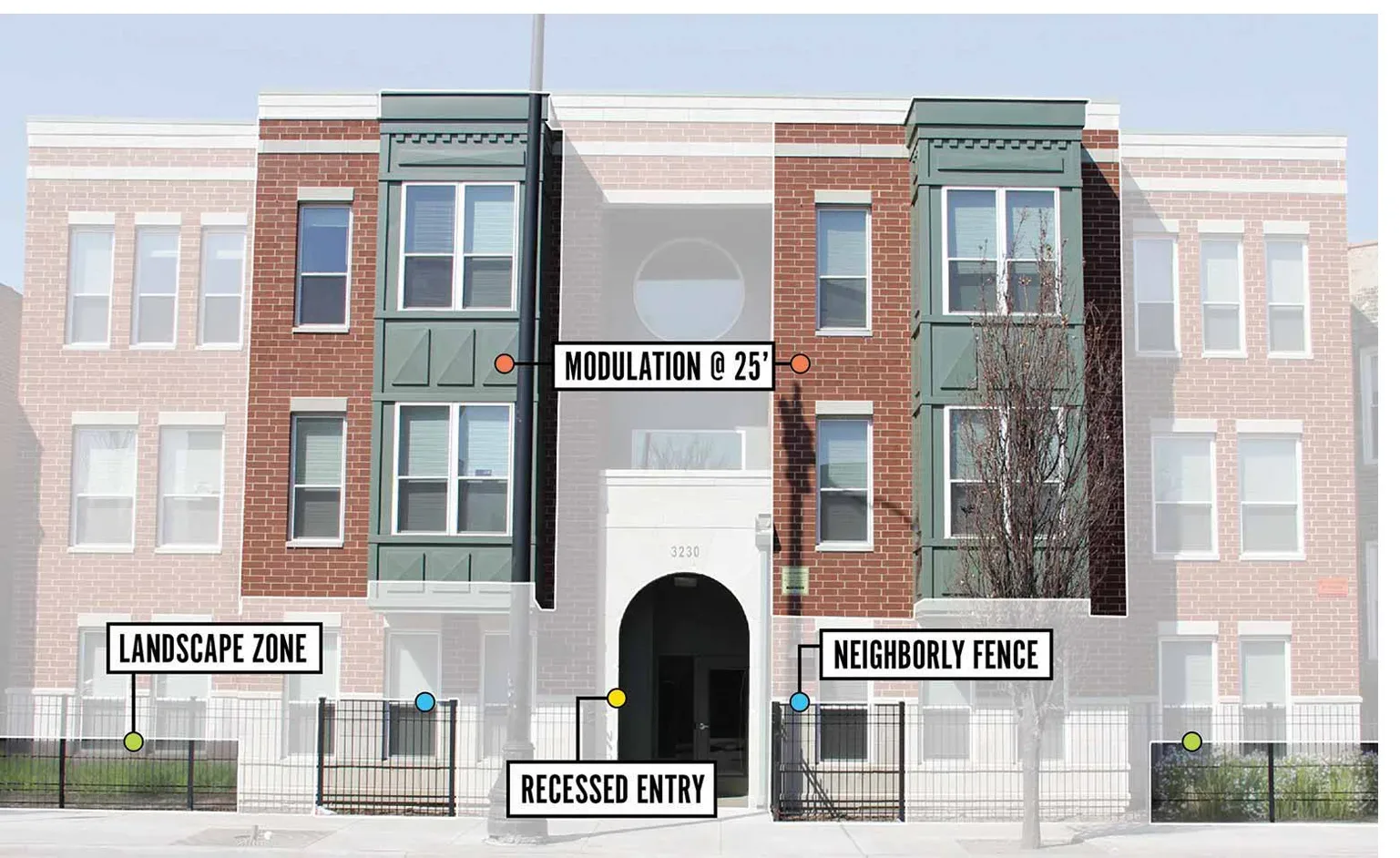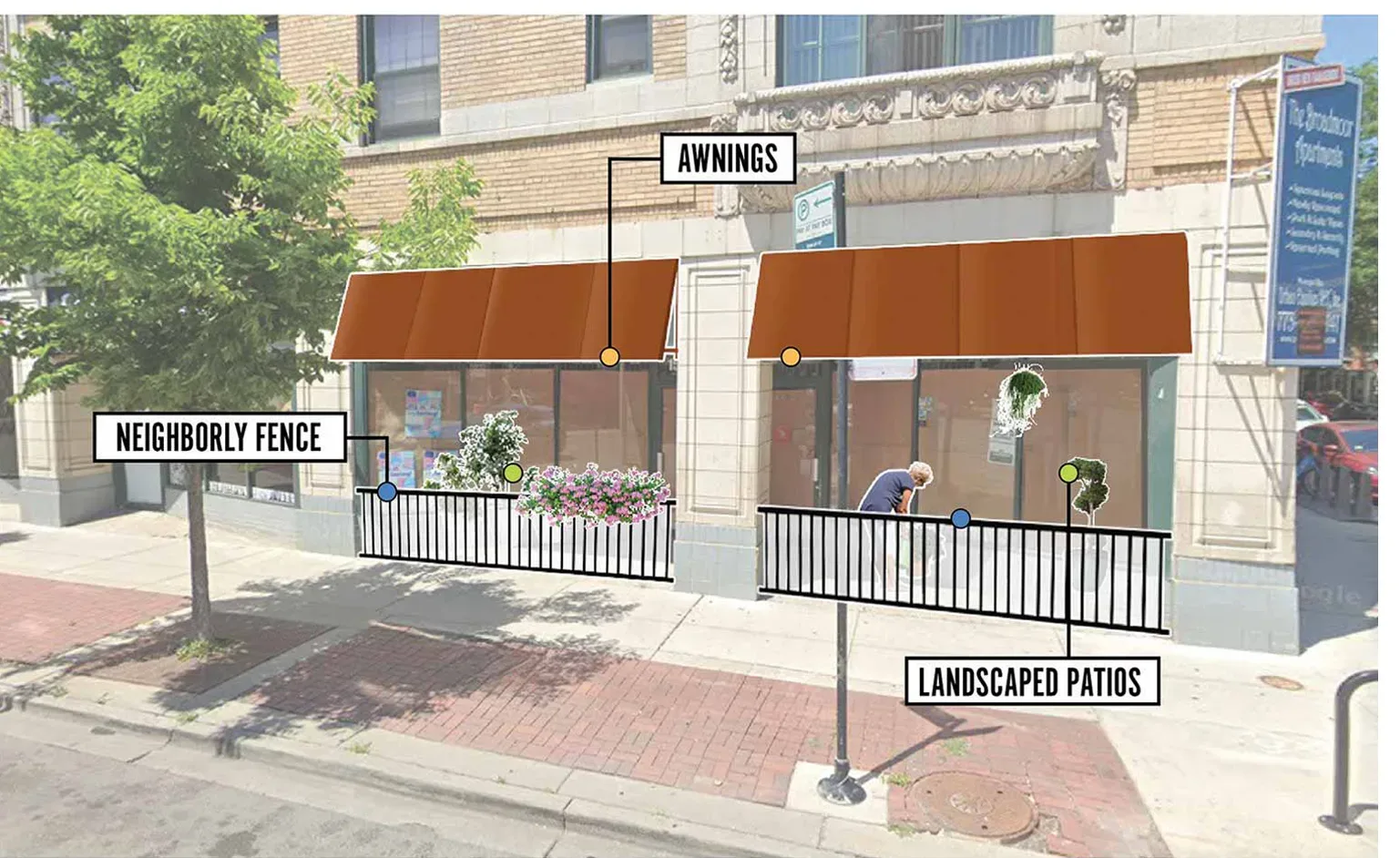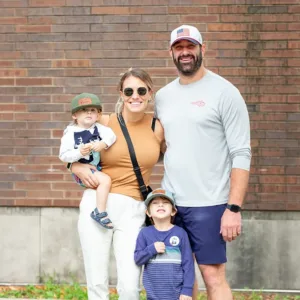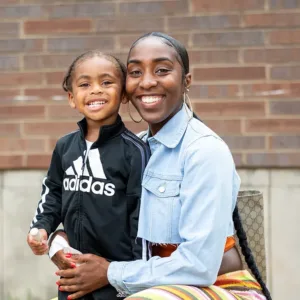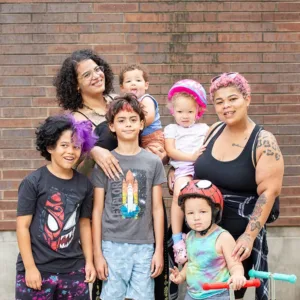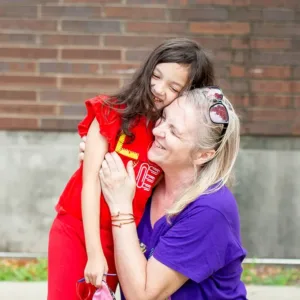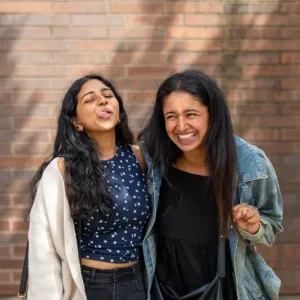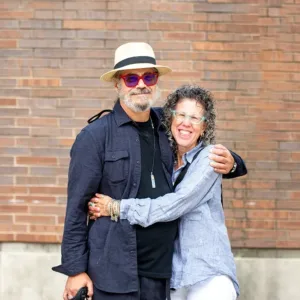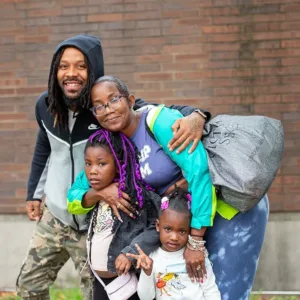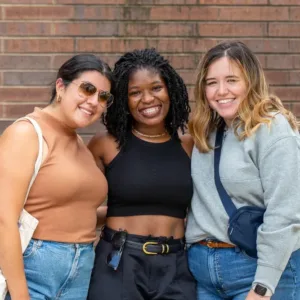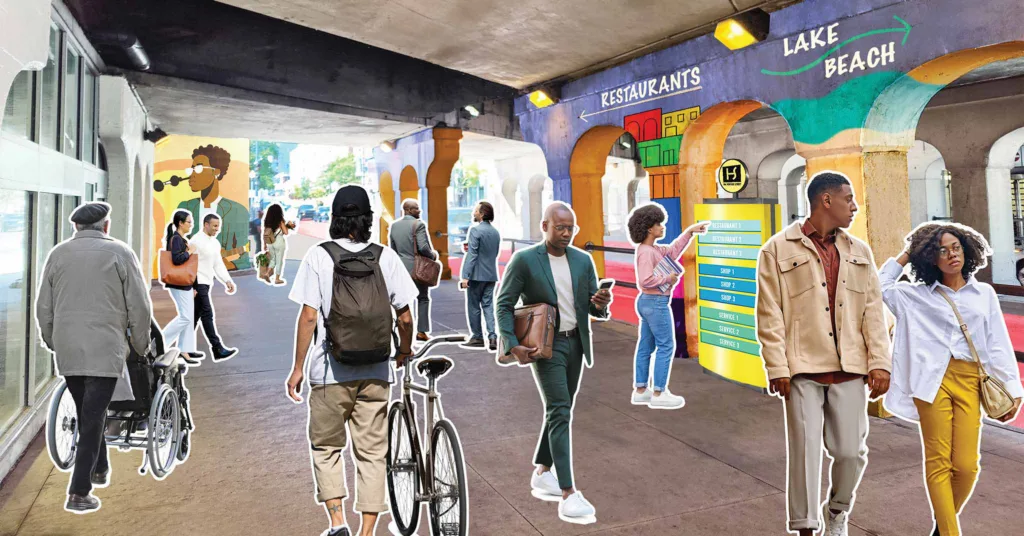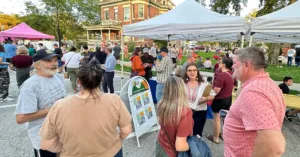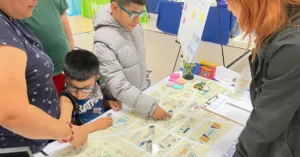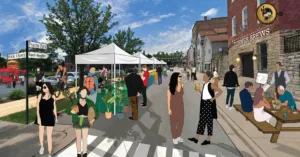ECONOMIC RECOVERY ACROSS CITY BORDERS
MUSE led the development of One Howard Street, an inter-municipal plan that focuses on pragmatic short-term recommendations to set the stage for organic economic recovery. The plan’s 1.25-mile corridor includes the boundary between Chicago’s Rogers Park neighborhood to the south and the City of Evanston to the north and is the first plan that considers both sides of Howard Street.
Details
Client: Rogers Park Business Alliance + City of Evanston
Chicago + Evanston, IL
March 2023 – December 2023
Scope of Work
Economic development strategy
Community + stakeholder engagement
Graphic design
Urban design
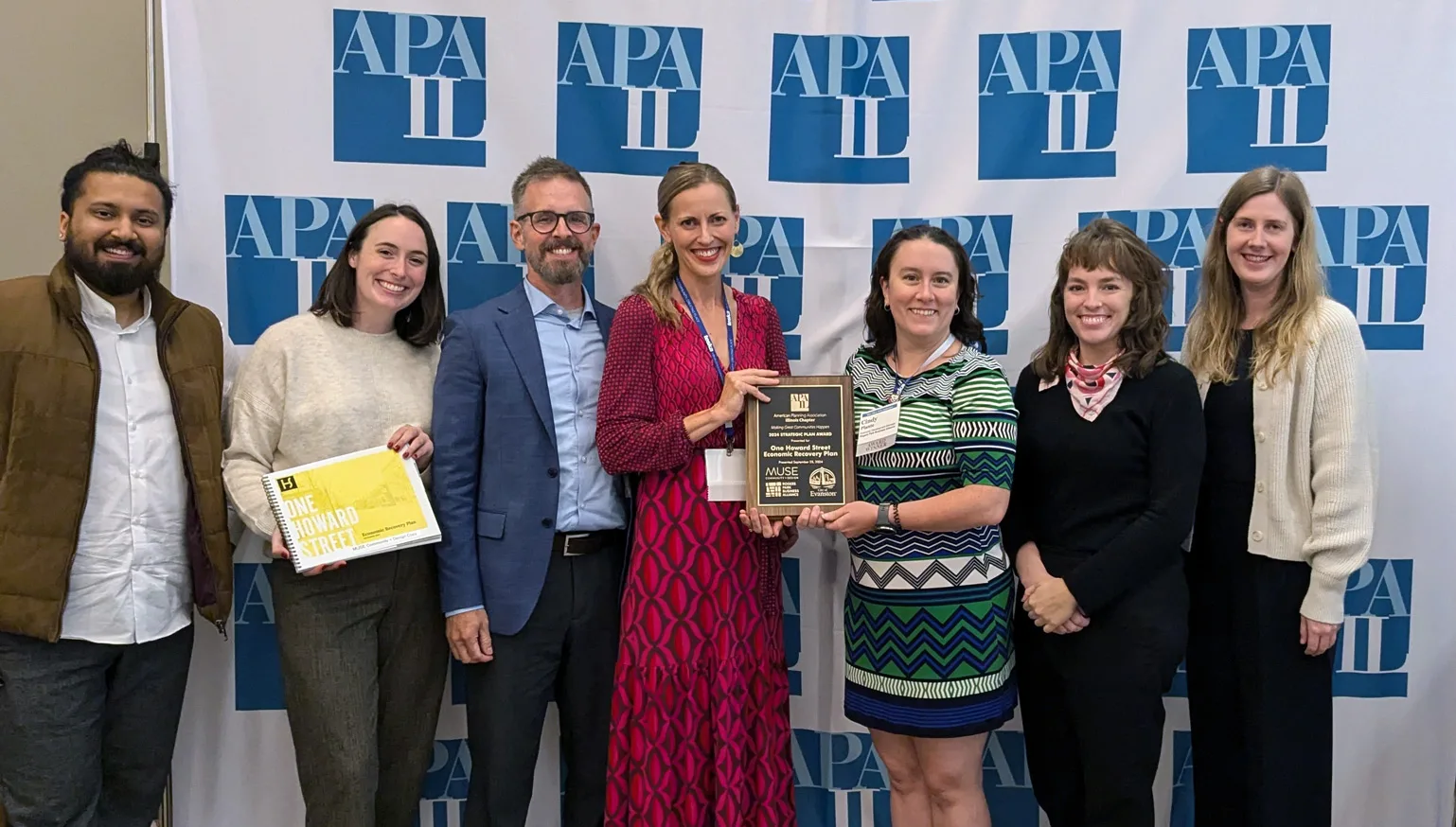
WINNER OF THE 2024 APA-IL STRATEGIC PLAN AWARD
WINNER OF THE 2024 ILLINOIS MAIN STREET ECONOMIC VITALITY RECOGNITION
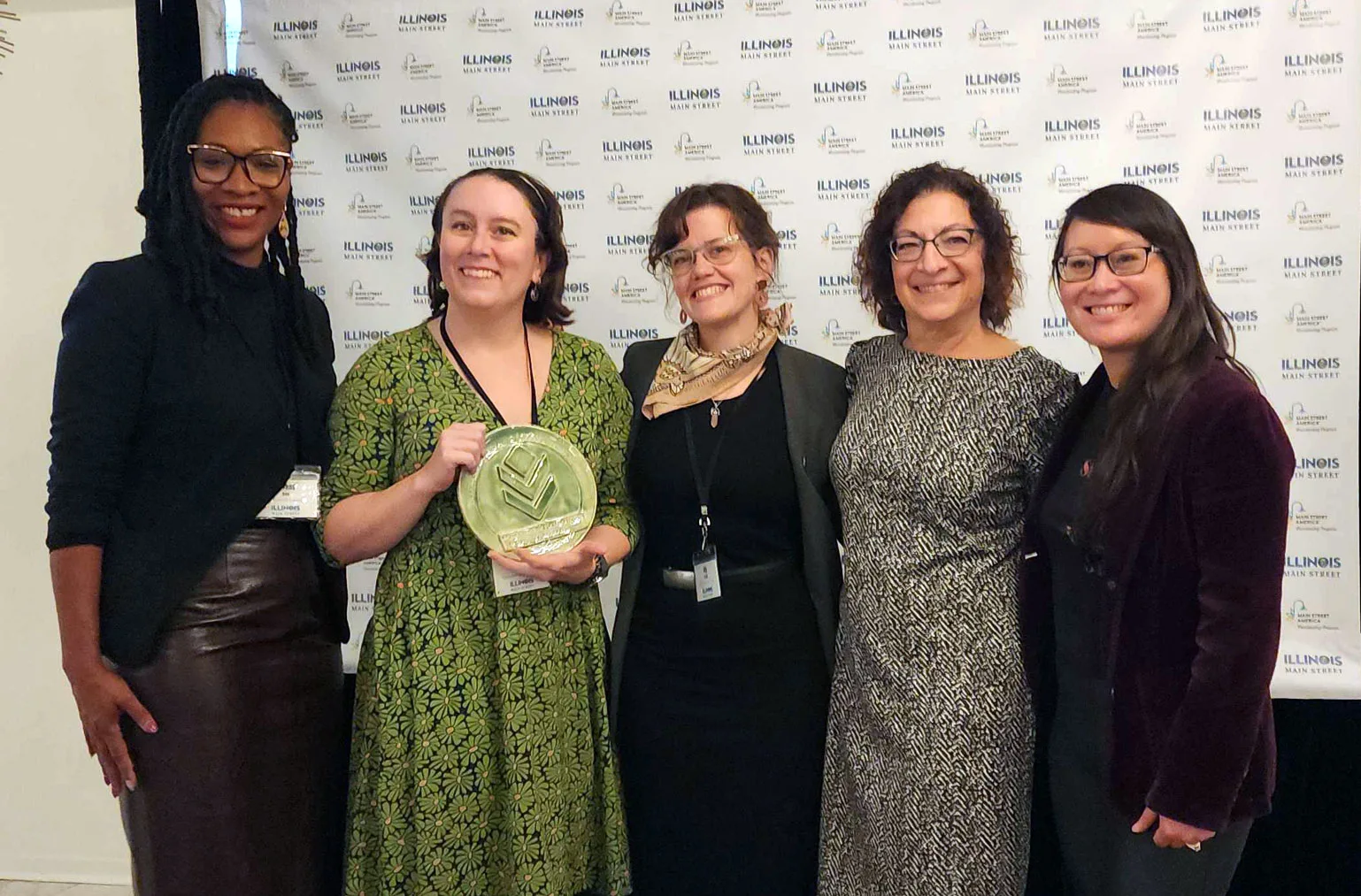
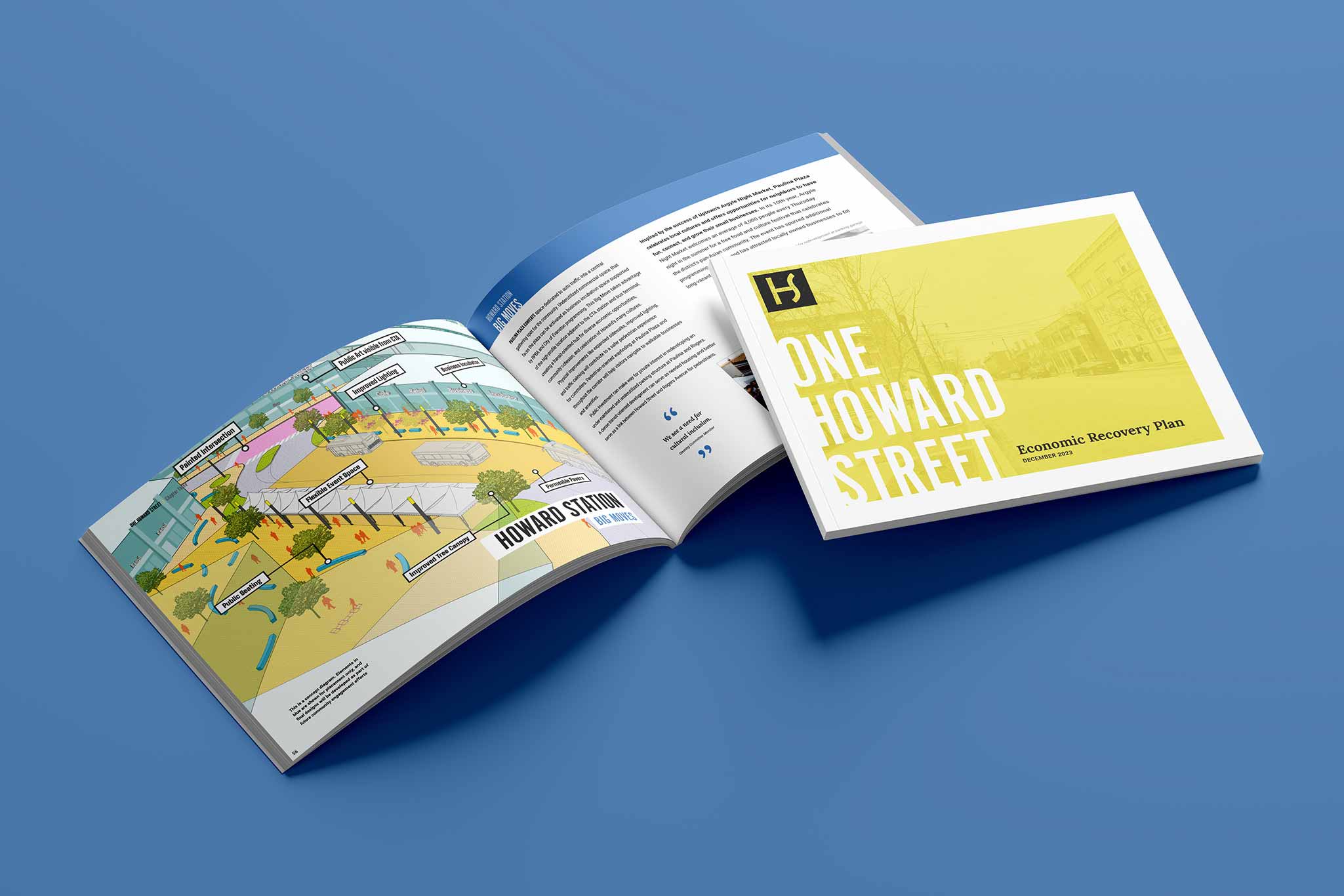
MEETING THE MOMENT
Despite its many assets and amenities, Howard Street’s potential has been stifled for decades. A car-centric streetscape, loss of naturally occurring affordable housing, and negative perceptions about public safety in the area, have contributed to the corridor’s economic challenges and were exacerbated by the impacts of the COVID-19 pandemic. The One Howard Street team successfully set out to create a plan that met the realities of today while envisioning a stronger and more unified tomorrow.
MUSE Method
The engagement strategy was supported by a steering committee of business owners, non-profit staff, and local residents from Evanston and Chicago. Care was taken to reach populations who are often left out of planning processes, including youth and residents with limited digital access.
Implementation for most recommendations is within the control of project team members. For complex strategies that require coordination across agencies, municipalities, and property owners, the team incorporated review periods with implementing bodies to identify and address potential constraints in the plan. Implementation of One Howard Street began shortly after adoption. The teams at RPBA and City of Evanston continue to meet regularly to coordinate funding and programming opportunities on both sides of the street.
One Howard Street is rooted in anti-displacement principles. Recommendations aim to maintain what’s currently working in the corridor and leverage local resources to address challenges and community concerns. Furthermore, the ground-floor activation framework identifies opportunities to add to the local housing stock by reimagining long-standing commercial vacancies as naturally occurring affordable rental units.
One Howard Street takes a pedestrian-centered lens, and includes quality-of-life recommendations that focus on the built environment and principles of “dignity infrastructure.” Examples include reducing driveway curb cuts and adding protected bike lanes and sheltered bus stops.
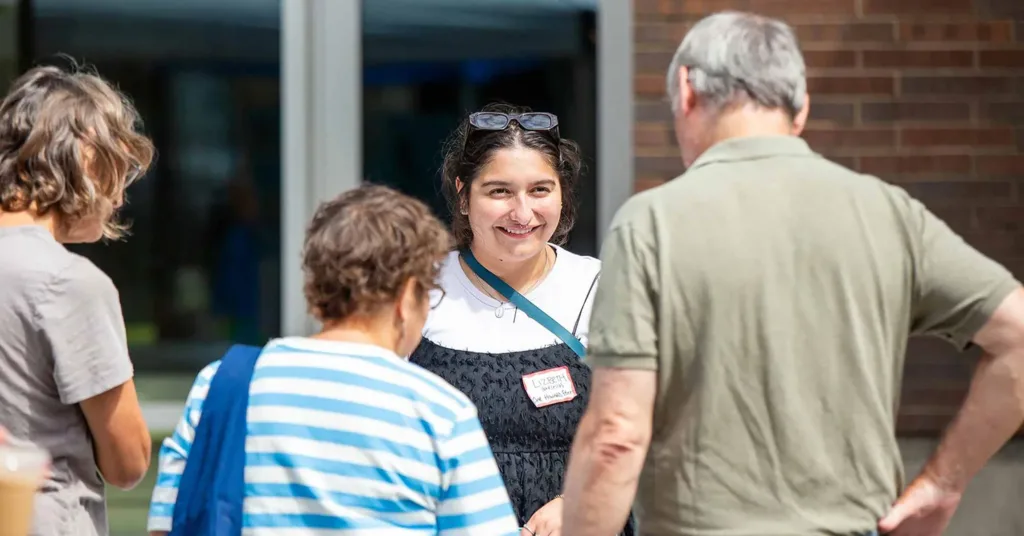
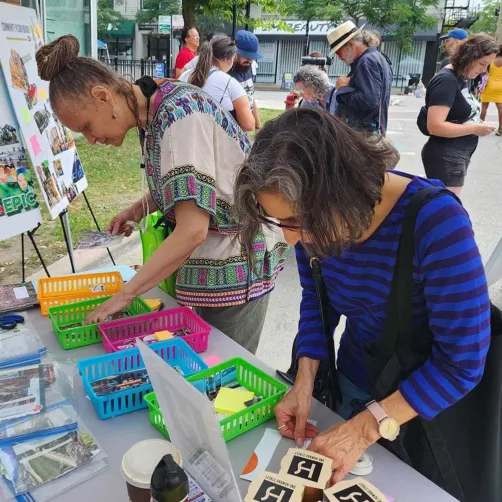
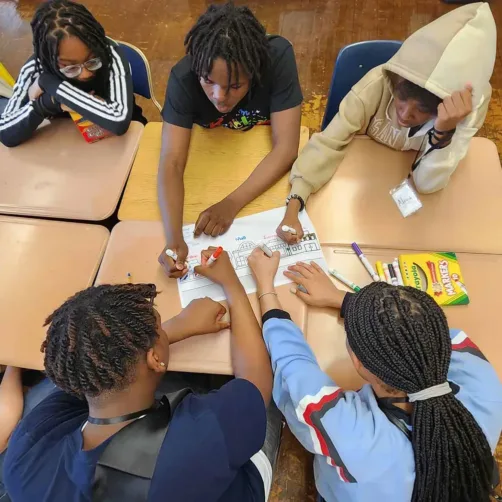
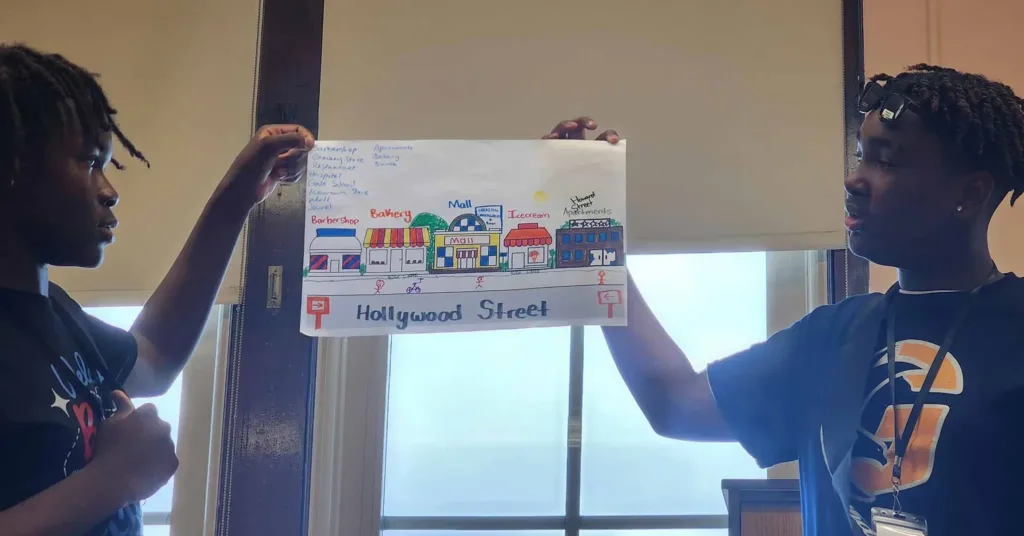
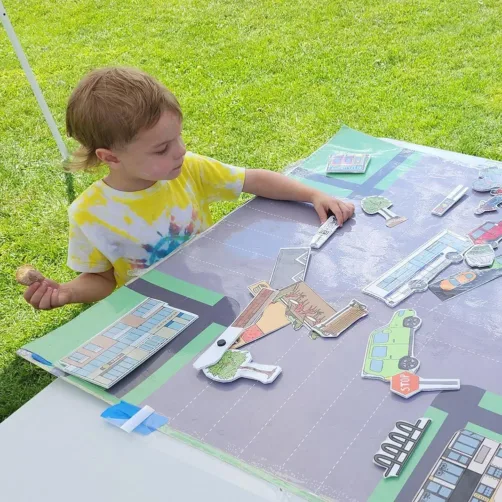
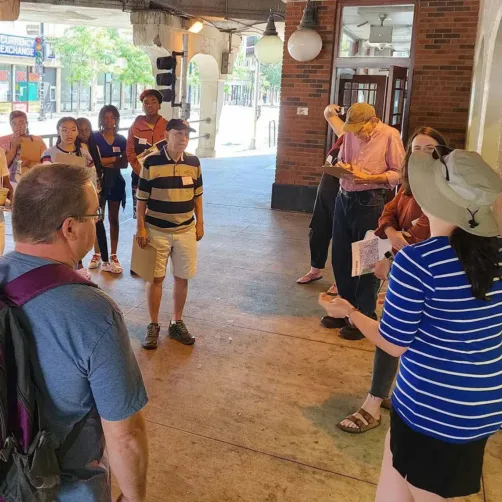
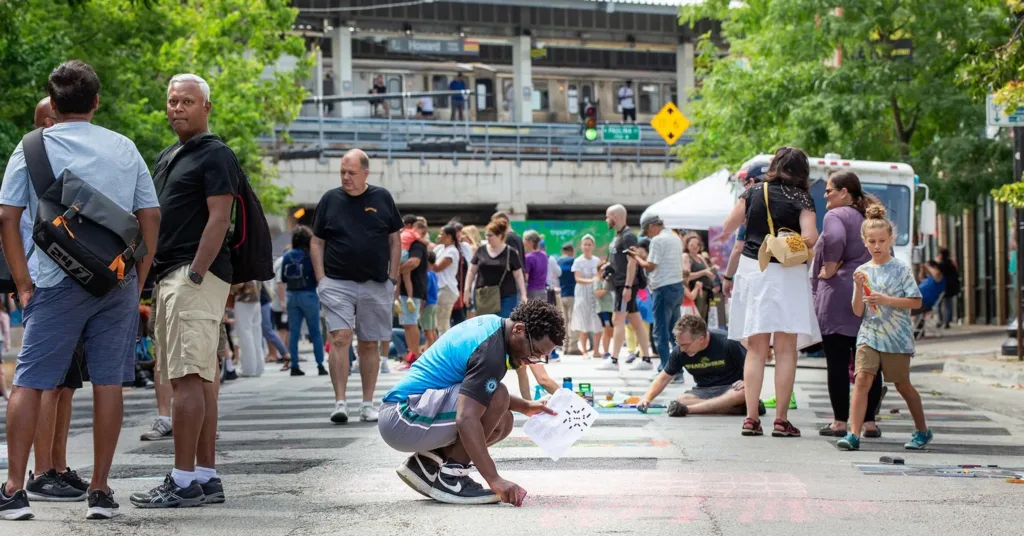
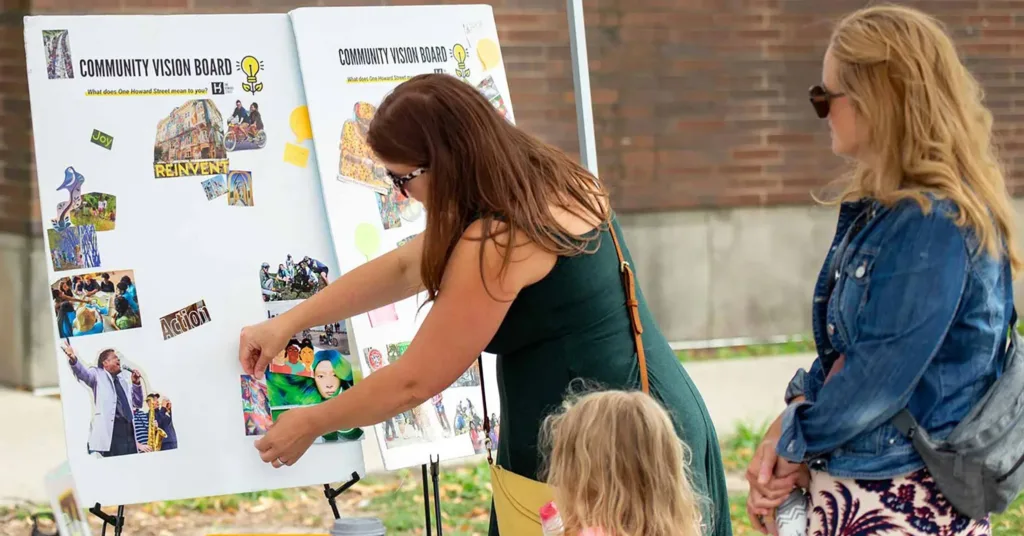
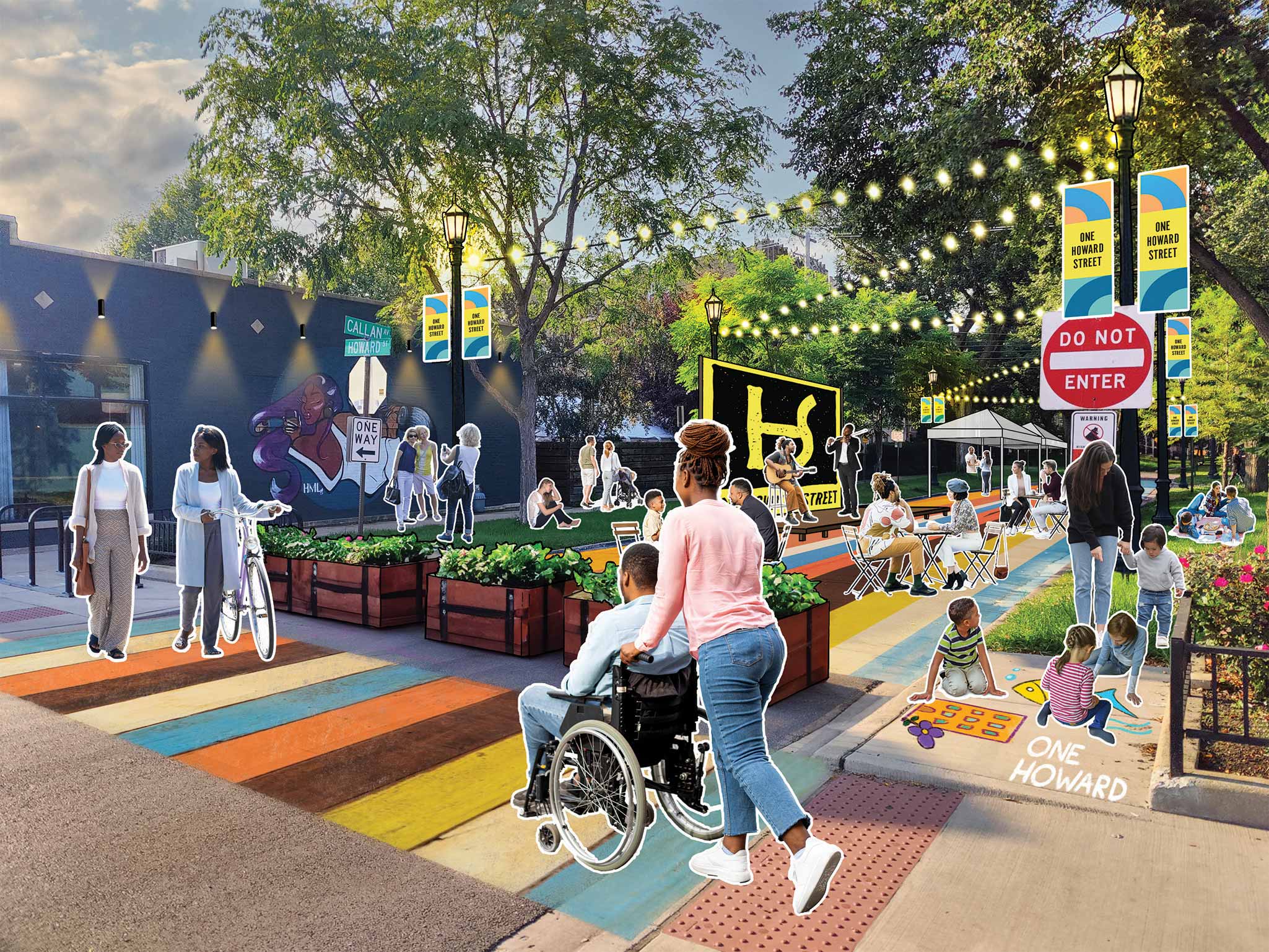
SWEATING THE SMALL STUFF
For residents, business owners, and patrons, the street’s border nature contributes to a mix of minor annoyances and significant frustrations: misaligned addresses on either side of the street can lead to rideshare driver confusion, competing business incentives have drawn entrepreneurs who would have opened shop in Chicago across the street to Evanston, and residents’ service requests for things like streetlight outages and potholes can seem lost in a bureaucratic volley between municipalities. Alignment in policy, programming, and urban design on both sides of the street was quickly identified as a way to work toward economic recovery.
COMMUNITY PERSPECTIVES
Here’s what we heard from residents, employees, and business owners on Howard Street.
We see a need for cultural inclusion.
Steering Committee member
Adding more murals of life, color, and community will make our Howard Street look and feel more inviting.
Survey respondent
Public safety starts with healing and eduction.
Public workshop attendee
People like to hang out here. Let’s formalize the space for them.
Survey respondent
Invest in community and look to Jarvis Square for inspiration. Creating more outside spaces to eat might help safety on the corridor.
Survey respondent
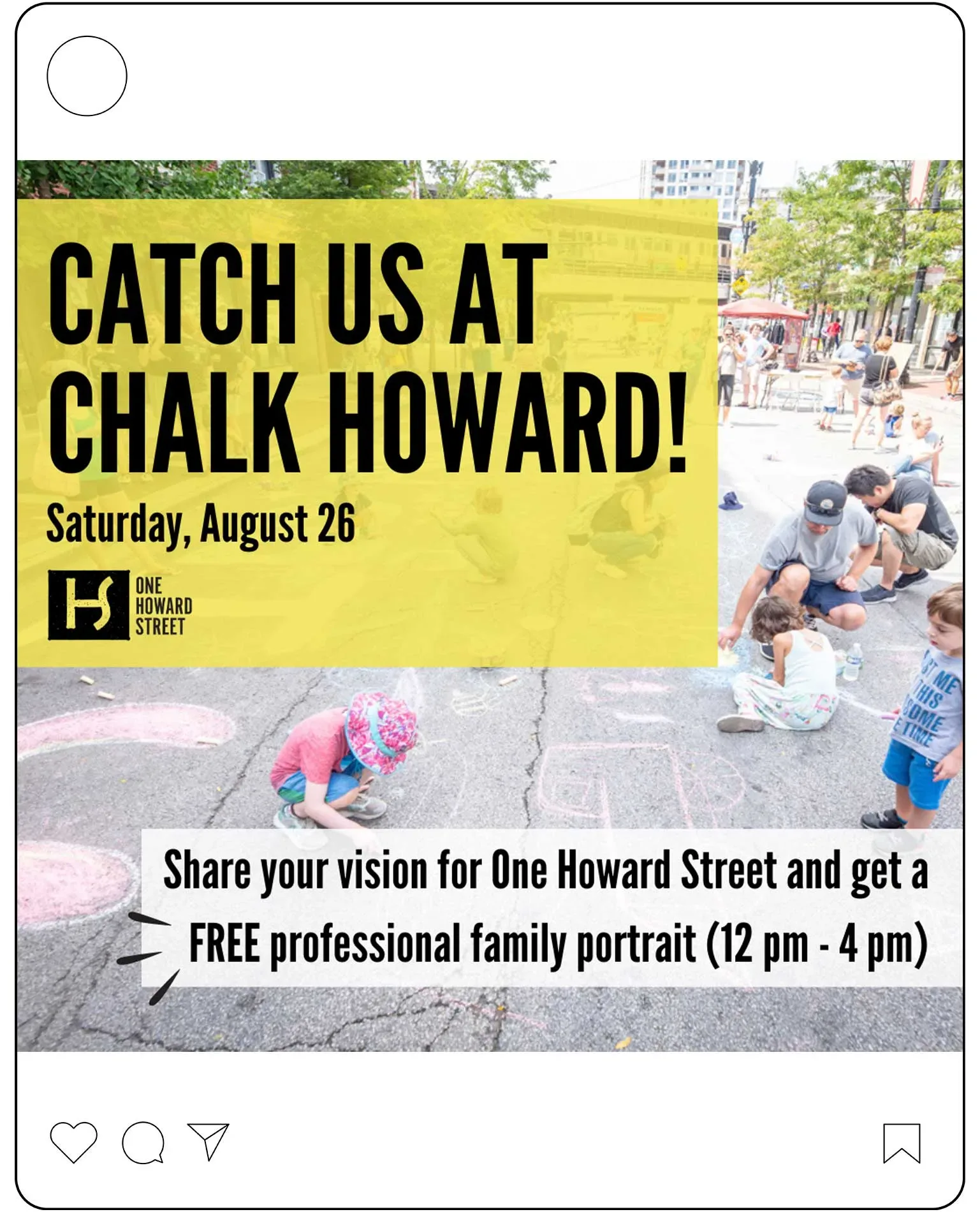
BRINGING PEOPLE TOGETHER
One Howard Street takes inspiration from third-generation CPTED (Crime Prevention Through Environmental Design) principles, anchoring recommendations in a “virtuous cycle” which posits that more activity on the street will lead to perceptions of increased safety, which will lead to more activity on the street, and so on.
Plan recommendations looked for ways to formalize and support how neighbors were already gathering on the street through the creation of public plazas. The corridor’s multicultural nature provides inspiration for programming and events that celebrate the community’s diversity.

Ground-floor activation framework
One Howard Street includes a framework that encourages flexibility when programming ground-floor spaces.
